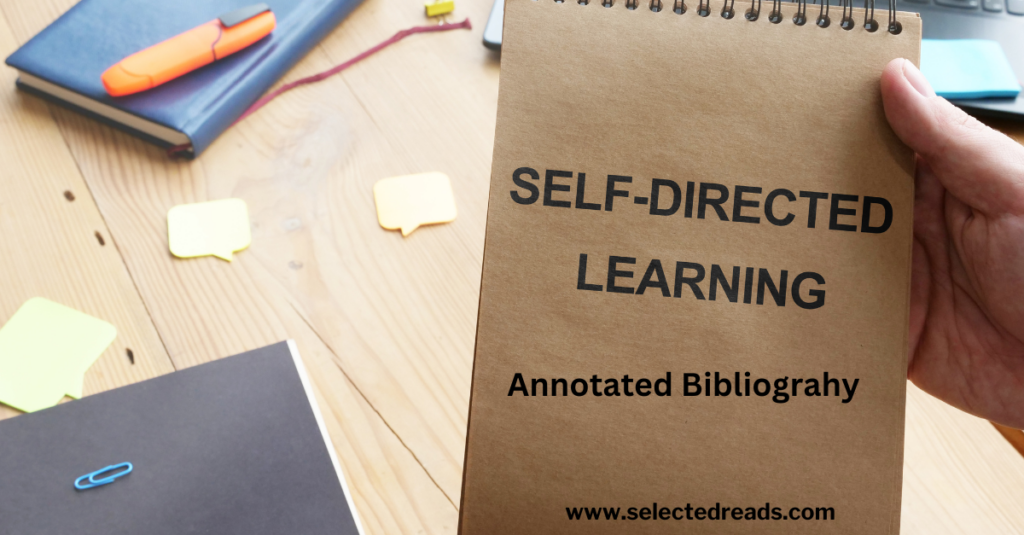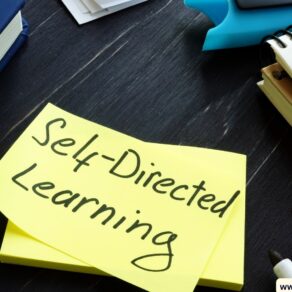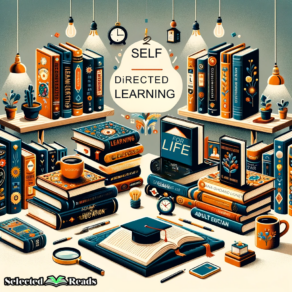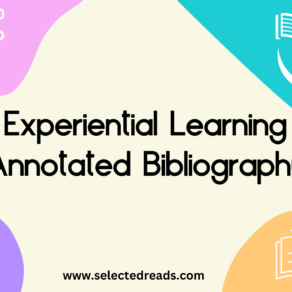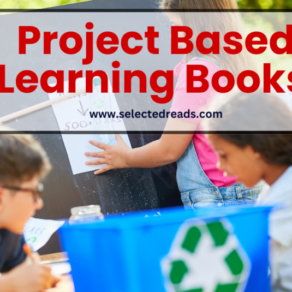If you’ve ever wondered about the intricacies of self-directed learning, you’re in the right place. This comprehensive guide is designed to serve as a resource hub, providing you with academic papers, seminal works, and thought-provoking discussions to deepen your understanding of self-directed learning. Whether you’re working on an academic project, pondering pedagogical strategies, or just intellectually curious, you’ll find something of value here.
Before diving into the academic papers, you might want to take a look at my earlier post where I break down what self-directed learning is all about. Trust me, it sets the stage beautifully for the heavier stuff. And for those of you who are bookworms like me, I’ve also included a specially curated list of books on self directed learning featuring the seminal works of authority scholars in the field.
I divided this self directed learning annotated bibliography into two sections: the first section is on self-directed learning research papers and the second one on self-directed learning books. Let’s start with the first section:
Self-Directed Learning Research Papers
In this section of the annotated bibliography, you’ll find a selection of cutting-edge research papers that delve into various aspects of education, from pedagogical theories to the effective use of technology in the classroom. Each entry provides a snapshot of the paper’s key arguments, methodologies, and findings. Ideal for those of you who, like me, are always eager to explore the academic underpinnings of educational practices. These papers are essential reads for anyone looking to get a nuanced understanding of current educational discourse, supported by empirical data and scholarly rigor.
Barry, M., & Egan, A. (2018). An adult learner’s learning style should inform but not limit educational choices. International Review of Education, 64(1), 31–42.
Summary:
The paper scrutinizes the use of learning styles assessments in adult education, particularly how they guide educational choices for adult learners. The authors contend that while many adult learners are drawn to courses that align with their self-perceived learning styles, the efficacy of these learning styles assessments is not sufficiently backed by research. The paper discusses why these assessments still hold sway, touching on aspects like confirmation bias and limited resources for educators to evaluate research methods.
Commentary:
This paper resonates with my own experiences, both as an educator and a researcher. While learning styles are commonly integrated into the educational lexicon, the question remains: Are they genuinely useful or just pedagogical folklore? One takeaway from Barry and Egan’s discussion is the caution that these assessments should be used for reflective purposes but should not solely dictate educational choices. I’d argue that teachers, and even learners themselves, should be wary of becoming too reliant on these assessments. Learning is complex and doesn’t fit neatly into boxes.
Beach, P. (2017). Self-directed online learning: A theoretical model for understanding elementary teachers’ online learning experiences. Teaching and Teacher Education, 61, 60–72.
Summary:
Beach’s study delves into the realm of self-directed online learning among elementary teachers, using a blend of retrospective think-aloud protocols and screen recording technology. The research yielded a comprehensive theoretical model that outlines how teachers engage with professional development websites. The paper provides a nuanced understanding of self-directed online learning in a teaching context, identifying the stages and cognitive processes involved.
Commentary:
Beach’s research is a must-read for anyone deeply invested in edtech, like me. This paper provides empirical depth to the growing conversation around professional development in the digital age. The use of innovative methodologies, like screen recording and think-aloud protocols, offers a compelling look into the user experience of educators. It made me reflect on how we could better design educational platforms that consider the cognitive journey of self-directed learners. This study also ties in beautifully with my ongoing inquiry into self-directed learning, both in my own doctoral journey and as a topic I’ve explored in-depth on my blog.
Beckers, J., Dolmans, D., & van Merriënboer, J. (2016). e-Portfolios enhancing students’ self-directed learning: A systematic review of influencing factors. Australasian Journal of Educational Technology, 32(2), 32–46.
Summary:
The paper is a meta-analysis spanning 30 years and multiple countries, aiming to understand how self-directed learning (SDL) is related to other constructs like internal locus of control, motivation, performance, self-efficacy, and support. The study finds positive correlations between SDL and these variables, emphasizing the use of e-Portfolios as a practical tool to encourage SDL and thereby improve various facets of effective workplace learning.
Commentary:
This meta-analysis caught my attention for its comprehensive scope. The findings on e-Portfolios particularly piqued my interest as they align with my ongoing investigation into how tech can enhance learning experiences. The paper serves as a reminder that for SDL to truly work, it needs a supportive ecosystem of motivating factors, something I often emphasize in my own blogs. It’s almost like a recipe: mix internal control, a sprinkle of motivation, a dollop of self-efficacy, and voilà, you have an environment ripe for effective SDL.
Boyer, S. L., Edmondson, D. R., Artis, A. B., & Fleming, D. (2014). Self-directed learning: A tool for lifelong learning. Journal of Marketing Education, 36(1), 20–32.
Summary:
Similar to the previous study, this meta-analytic review also delves into the variables that influence self-directed learning. It specifically examines how SDL can be effectively utilized in undergraduate and MBA sales management courses. The research confirms positive relationships between SDL and various key constructs such as internal locus of control, motivation, performance, self-efficacy, and support.
Commentary:
The thematic overlap with the previous paper is interesting, but what stands out here is the focus on lifelong learning, something I deeply care about. It serves as a concrete example of how SDL concepts can be put into practice, specifically in business education. The emphasis on lifelong learning skills offers actionable insights for educators looking to prepare students for a constantly evolving workplace. It gets you thinking: if SDL is this effective in business courses, what untapped potential could it have in other educational contexts?
Brookfield, S. (1993). Self-directed learning, political clarity, and the critical practice of adult education. Adult Education Quarterly, 43: 227-242.
Summary:
Brookfield delves into the concept of self-directed learning (SDL) in a unique way by framing it as an inherently political construct. He argues that self-direction isn’t just about individualism or self-gratification but is embedded in broader issues of control, power, and resistance against oppressive systems. The paper discusses the need for particular political conditions to exercise authentic self-directedness and how the concept can stimulate critical thinking in adult education.
Commentary:
Wow, this one’s a firecracker! I loved how Brookfield took SDL into the realm of the political. I’ve always viewed self-directed learning as a powerful tool for empowerment, but this paper really pushed the boundaries by linking it to political agency. It makes me ponder how we could, and should, leverage SDL in our educational approaches to make our learners not just proficient in their subjects, but also aware and critical citizens. This aspect is often ignored but it has a gravity we can’t afford to overlook, especially in today’s socio-political climate.
Davis, J., Cook, R., & Ostenson, J. (2015). Empowering Stereotyped Readers through Self-Directed Learning. The English Journal, 105(1), 42–47. JSTOR Link
Summary:
The paper highlights a case study where self-directed learning was used as a strategy to empower “struggling” ninth-grade readers. The author changed his teaching approach, rejecting labels and stereotypes, and offered students more control over their learning. Projects included socially relevant issues, like exploitative labor practices and bullying. Students gathered information and created content, showcasing a heightened level of engagement and autonomy in their learning.
Commentary:
This paper hit close to home, especially my years in the classroom where labeling was a constant struggle. Davis et al. took a bold step by challenging the status quo and allowing these ninth graders to break free from the stigmas attached to them. It’s an essential read for anyone who thinks that SDL might just be a buzzword. It shows how giving agency to the learners can create transformative educational experiences, a point I can’t stress enough in my own work. I also appreciate the focus on socially relevant projects, giving students not just knowledge but a sense of purpose.
Della-Dora, D., & Wells, J. D. (1980). Teaching for Self-Directed Learning. Theory Into Practice, 19(2), 134–140. JSTOR Link
Summary:
Della-Dora and Wells bring the discussion of Self-Directed Learning (SDL) into the realm of democracy. They emphasize that for a society to maintain and further its democratic values, schools must make SDL part of the educational core. This is essential not just for academic basics but also for instilling democratic values in students.
Commentary:
Talk about bringing two worlds together! I’m captivated by the paper’s angle on SDL as not just an educational strategy but also as a civic responsibility. As educators, we usually talk about fostering critical thinking and promoting engagement, but how often do we tie that back to the broader democratic society? It’s a rich vein of thinking that I haven’t fully explored in my work, but it’s got my gears turning for sure. I think this has strong implications for EdTech tools that promote SDL as well; they could be used to foster democratic participation and civil discourse among students.
Dunlap, J. C., & Grabinger, S. (2003). Preparing students for lifelong learning: A review of instructional features and teaching methodologies. Performance Improvement Quarterly, 16(2), 6–25.
Summary:
This article reviews methodologies and instructional features that are effective in preparing students for lifelong learning. The authors focus on self-direction, metacognitive awareness, and an overall disposition towards lifelong learning. They identify five instructional features: student autonomy, intrinsically motivating learning activities, enculturation, discourse and collaboration among learners, and reflection.
Commentary:
I’m a sucker for practical frameworks, and this paper delivers. It isn’t just talking about lifelong learning as a nice idea; it’s giving you the blueprint on how to instill it. Particularly interesting is the emphasis on enculturation and discourse among learners, something I’ve always felt is a strong catalyst for authentic learning experiences. It echoes a lot of my experiences, where collaboration and discussion could turn a mundane lesson into an enlightening debate. I’m totally going to integrate some of these features in my future EdTech reviews. And let’s not forget the emphasis on metacognitive awareness; it’s almost like teaching students how to be their own teachers, which is the epitome of self-directed learning.
Garrison, D. R. (1997). Self-directed learning: Toward a comprehensive model. Adult Education Quarterly, 48(1), 18–33.
Summary:
Garrison’s paper attempts to expand the scope of self-directed learning (SDL) by proposing a comprehensive theoretical model. This model incorporates self-management, self-monitoring, and motivational dimensions. He argues that this multidimensional approach offers a meaningful pathway for SDL, highlighting that future research should focus on the cognitive and motivational aspects.
Commentary:
Ah, Garrison’s paper! I’ve read this one a few times over the years, and it never fails to impress. It adds layers to the SDL concept by bringing in elements of self-management and motivation, areas often overlooked but fundamentally crucial. I’ve always been a fan of how it emphasizes the need for a learner to not just manage their learning tasks but to also have the cognitive and emotional skills to sustain that learning. It’s like he’s speaking to the educator in me who loves nothing more than to see a student become their own teacher. In EdTech, this could be a game-changer for tools that focus on learner analytics and adaptability.
Grow, G. O. (1991). Teaching learners to be self-directed. Adult Education Quarterly, 41(3), 125–149.
Summary:
Based on the Situational Leadership model, Grow’s paper introduces the Staged Self-Directed Learning Model, suggesting that learners progress through various stages of self-direction. Teachers can facilitate this by aligning their teaching style with the learner’s current stage of self-direction. The paper also recounts Grow’s own experiences with adult education and its unique challenges, emphasizing the varying abilities of students to be self-directed.
Commentary:
Grow’s paper hit home for me. I couldn’t help but nod along as I read about his experiences and challenges in teaching adult learners. Teaching adults really is a different ball game; it’s like they already have a roadmap but sometimes need help reading it. The Staged Self-Directed Learning Model he presents is something that I’ve observed in practice but never had a framework for. It’s like saying, “Hey, meet your students where they are, but also know that they won’t stay there forever.” The model could be a useful lens for EdTech developers to consider, especially in creating adaptive learning environments that account for various stages of learner independence.
Louws, M. L., Meirink, J. A., van Veen, K., & van Driel, J. H. (2017). Teachers’ self-directed learning and teaching experience: What, how, and why teachers want to learn. Teaching and Teacher Education, 66, 171–183.
Summary:
The study by Louws et al. examines self-directed learning among teachers. Based on a survey conducted on 309 teachers in Dutch secondary schools, the study seeks to answer questions concerning what teachers want to learn, how they prefer to learn it, and why they choose specific learning domains. Intriguingly, it found that early and late-career teachers are more inclined to learn about classroom management compared to their mid-career counterparts.
Commentary:
I find the findings from this study particularly interesting. It maps onto some of my own observations: new teachers are keen on mastering classroom management, as are those nearing the end of their careers—perhaps with an eye on mentorship or coaching roles. It’s the mid-career folks, often overlooked, who seem to have their feet firm enough on the ground to explore other domains. These insights resonate with me as they have implications for EdTech tools that offer professional development courses. Targeting the right content to the right career stage could be key here.
Morris, T.H. (2019). Self-directed learning: A fundamental competence in a rapidly changing world. Int Rev Educ 65, 633–653.
Summary:
Morris’s paper argues that self-directed learning is essential in our fast-paced, digital society. The paper outlines the history of self-directed learning, who benefits from it, who is likely to engage in it, and what research says about its outcomes. It emphasizes that everyone can potentially benefit from self-directed learning but notes that societal and individual factors play a significant role in its implementation.
Commentary:
This paper strikes a chord, especially when Morris discusses the increasing importance of self-directed learning in a digital age. Being knee-deep in EdTech, I see this every day. The learner has never had more resources at their fingertips; the challenge is navigating this ocean of information in a purposeful way. Morris brings up key points about who is likely to engage in self-directed learning, and this has me thinking—our educational technology should not only facilitate learning but also be designed in a way that helps foster these essential self-directed skills. Imagine a learning platform that adjusts to individual learning styles while also nudging them to become more self-directed. How awesome would that be?
Self-directed learning books
Here, you’ll find an eclectic mix of titles that range from foundational texts to practical guides. Each book is accompanied by a brief summary that highlight its relevance. These books, I believe, will provide you with a well-rounded view on the concept of self-directed learning.
Learning for Life: Creating Classrooms for Self-Directed Learning, by Ronald J. Areglado, R. C. Bradley, Pamela S. Lane
Let’s start with “Learning for Life,” a book that champions the shift from traditional, teacher-centric classrooms to learner-focused environments. The authors have combined years of classroom experience with solid theory to offer teachers actionable strategies for this transformation. For me, the book’s emphasis on the educator’s role in facilitating change is particularly meaningful. This book is a gem if you’re trying to infuse your teaching practices with self-directed learning concepts.
Buy Learning for Life on Amazon
Learning in Adulthood: A Comprehensive Guide (4th Edition)
by Sharan B. Merriam, Lisa M. Baumgartner
This book is pretty much the ‘Bible’ for adult education. It covers a plethora of factors influencing adult learning, drawing from various disciplines like psychology, sociology, and philosophy. The authors have done a remarkable job of weaving together theories like self-directed and transformational learning. Trust me, this is a must-read, especially if you’re keen to understand adult education from multiple angles.
Buy Learning in Adulthood on Amazon
The Meaning of Adult Education
by Eduard Christian Lindeman
Lindeman’s work here is a bit of a curveball—it broadens the scope of education to life itself, arguing that true learning is intrinsically tied to our real-world experiences. This notion has always struck a chord with me; education isn’t just about bookish knowledge but about how we navigate the world. It’s a refreshingly grounded take on education that puts the learner’s lived experiences at the forefront.
Buy The Meaning of Adult Education on Amazon
Philosophical Foundations of Adult Education (3rd Edition)
by John L. Elias and Sharan B. Merriam
This is a scholarly feast for anyone diving into the theoretical framework of adult education. It details seven distinct philosophical perspectives and their evolution over time. For me, the best part is how the book neither glorifies nor demonizes any single philosophy. Instead, it offers a well-rounded perspective that can enrich our understanding of adult education.
Buy Philosophical Foundations of Adult Learning on Amazon
Situated Learning: Legitimate Peripheral Participation
by Jean Lave and Etienne Wenger
Finally, let’s talk about “Situated Learning,” a revolutionary book that brought the social dimensions of learning into the spotlight. The concept of “legitimate peripheral participation” genuinely blew my mind when I first read it. It underscores the importance of community in learning, and how this can be harnessed in various educational settings—be it in traditional classrooms or modern tech labs.
Buy Situated Learning on Amazon
Self-direction in Adult Learning: Perspectives on Theory, Research, and Practice
This seminal work provides a comprehensive view of self-directed learning, focusing on its role in adult education. With practical advice and theory interwoven, it serves as an invaluable resource for facilitating self-directed learning. This aligns closely with my belief that self-direction can yield lifelong benefits beyond the academic sphere.
Buy Self-direction in Adult Learning on Amazon
Self-Direction for Lifelong Learning: A Comprehensive Guide to Theory and Practice
Philip C. Candy delves into the history and philosophy of self-directed learning, providing substantial academic grounding. The book is essentially a roadmap for understanding learning autonomy, affirming my long-held belief that learner autonomy enriches educational experiences.
Buy Self-Direction for Lifelong learning on Amazon
Teach Yourself How to Learn
A practical guide aimed at improving learning processes, McGuire’s book addresses common learning pitfalls and offers actionable strategies. It emphasizes the importance of metacognition, resonating with my view that understanding how we learn is a missing link in education.
Buy Teach Yourself How to Learn on Amazon
The Adult Learner
Often considered the definitive text on adult learning theory, this book highlights how adults learn differently and underscores the influence of life experiences on adult learning. I consider this a go-to resource, especially when crafting curricula for adult learners.
Buy The Adult Learner on Amazon
Beyond Freedom and Dignity
This controversial book by Skinner challenges deeply ingrained beliefs about freedom and dignity. It advocates for a focus on environmental factors to bring about behavioral changes for societal improvement. A provocative read, but it does make me ponder critically about the educational environments we shape.
Buy Beyond Freedom and Dignity on Amazon
Toward a Theory of Instruction
Jerome Bruner argues for a structured theory of instruction to improve educational systems. Drawing from intellectual growth theories, the book serves as a comprehensive guide to understanding how human brains work in educational contexts.
Buy Toward a Theory of Instruction on Amazon
The School and Society
An ageless classic by John Dewey that argues for reorienting education to be more attuned to societal needs. Dewey believes that education should not only produce workers but also well-rounded individuals who are constructive members of society.
Buy The School and Society on Amazon
Experiential Learning by David Kolb
David Kolb picks up where Dewey left off but adds a new twist—the importance of experiential learning. He argues that learning becomes more impactful when rooted in real-life experiences and reflection. What’s particularly engaging is how Kolb maps out various learning styles and connects them to academic disciplines. This offers a taxonomy that we, as educators, can use to tailor our teaching methods to different learners. Definitely a game-changer for anyone interested in pedagogical styles and approaches.
Buy Experiential Learning on Amazon
Experience And Education by John Dewey
John Dewey is kind of like the Steve Jobs of educational philosophy—constantly evolving and questioning the status quo. ‘Experience and Education’ is a foundational text that explores the integral role of hands-on, experiential learning in education. Dewey revisits and refines his earlier theories, making the book a full-circle moment in understanding his philosophy. It’s not just a manual on pedagogical methods but an invitation to see education as the holistic development of individuals.
Buy Experience And Education on Amazon
The Self-Directed Learning Handbook by Maurice Gibbons
Now, this one is for the futurists among us. Gibbons’ book is centered on self-directed learning, focusing on how modern edtech tools can foster individualized educational experiences. The concept of ‘action contracts’ particularly caught my eye. They’re like the educational blueprints I’ve seen kids create in progressive classrooms—clear, actionable goals that give students the steering wheel in their learning journey.
Buy The Self-Directed Learning Handbook on Amazon
Pathways of Adult Learning by Janet Groen and Colleen Kawalilak
What makes this book stand out is its unique combination of narrative and academic theory. It’s not merely an exposition of adult education philosophies but a marriage of theory and lived experience. Groen and Kawalilak make academic discussions relatable by integrating narratives, which is something I find absolutely compelling. It’s a rich blend of the theoretical and the practical, which is pretty much what education should be all about.
Buy Pathways of Adult Learning on Amazon
Freedom to Learn by Carl R. Rogers and H. Jerome Freiberg
This book is a manifesto for a transformative, learner-centered education. Rogers and Freiberg challenge the status quo, asking us to reconsider our traditional models of education. The book aligns closely with what you would find in educational psychology journals, like ‘Educational Psychologist,’ advocating a pedagogy that empowers students to take ownership of their learning.
Buy Freedom to Learn on Amazon
Self-Directed Learning: A Guide for Learners and Teachers by Malcolm Shepherd Knowles
Malcolm Knowles essentially wrote the book on andragogy—the science of adult learning. This work shifted my perspective on adult learning in a big way. It’s a must-read for anyone who wants to understand why some professional development seminars work better than others. The best ones treat teachers like the professionals they are, and that’s Knowles’ core message: the importance of andragogy in adult learning.
Buy Self-Directed Learning on Amazon
Understanding and Facilitating Adult Learning by Stephen D. Brookfield
Brookfield doesn’t just talk about principles; he dives into real-world applications. This book has won numerous awards for a reason. It’s a rich resource that aligns closely with Brookfield’s contributions to the ‘Adult Education Quarterly,’ emphasizing the role of reflective practice in adult learning. It’s like a master class in the intricacies of adult education, offering insights that are both academic and practical.
Buy Understanding and Facilitating Adult Learning on Amazon
Final Thoughts
What a journey we’ve been on, sifting through the rich tapestry of ideas, theories, and practices that make up the realm of self-directed learning! From research papers rooted in empirical analysis to books that stretch across pedagogical philosophy and instructional how-tos, this annotated bibliography serves as a comprehensive guide for anyone passionate about empowering learners to take control of their educational experience.
The compelling thing about this field is how dynamic and ever-evolving it is—kind of like the learning process itself. During my time in both the classroom and research at Mount Saint Vincent University, it’s been fascinating to see how these ideas have not only stood the test of time but have also adapted and morphed in response to new educational technologies and societal shifts.
One thing’s for sure: the concept of self-directed learning is more than a mere educational trend or buzzword. It’s a seismic shift in how we conceive learning and teaching, underscoring the move from a teacher-centered to a learner-centered paradigm. As someone who has spent a significant amount of time in both conventional and progressive educational settings, I can say the shift is not only necessary but also invigorating.
If any of these titles or papers have piqued your curiosity, don’t hesitate to delve in deeper. Each one offers its own unique lens on self-directed learning, inviting you to challenge, reframe, or even validate your existing beliefs and practices. After all, as educators, researchers, or lifelong learners, isn’t that what we’re all striving for—to continue learning, growing, and improving?



